Courts pack a lot of information into a Colorado Support Order. This article will explain each element of a Colorado Support Order and indicate where to find the information that matters. The sample Support Order used in this article is the generic form used as a template by the courts. Actual orders may appear slightly different, depending upon the circumstances of any case.
These are the basic elements of a Colorado Support Order:
- The case caption;
- Information of the parties and children subject to the order;
- Details of the order;
- Summary of monthly payments;
- How payments must be made; and
- Responsibility for insurance coverage.
The Case Caption
The case caption gives essential background information of a case.
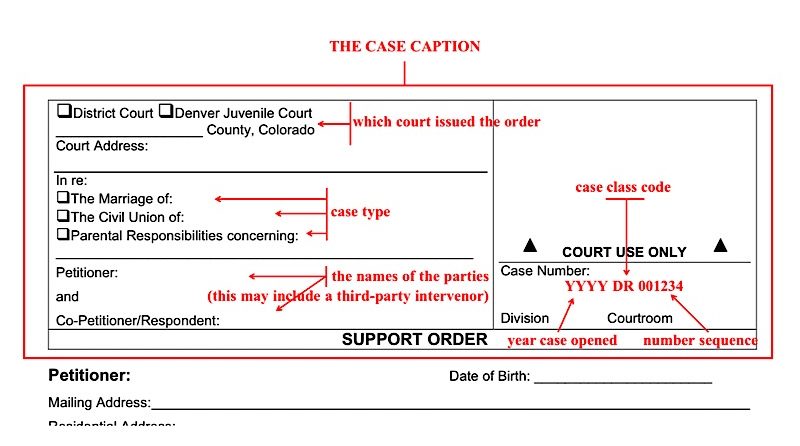
The top-left part of the caption will tell you what state, county, and specific court issued the order.
Right below that is the case type designation. If the case started as a divorce, or dissolution of marriage, it will be “In re the marriage of:”. It will keep this designation even for post-decree modifications, long after the divorce is final. Civil unions are typed “In re the civil union of:”. If the parties were never married and the matter involves children, such as custody or child support, it will be typed as “In re the parental responsibilities concerning:” followed by the names of the children subject to the case.
The lower left side names the parties. In family law related cases, including domestic relations, juvenile, dependency and neglect cases, the parties are known as petitioner and respondent/co-petitioner. If a third party entered the case, such as the county’s Child Support Services Unit or a grandparent or other interested party, such party could designated as “Intervenor.”
The case number assigned to your case provides additional details about the case. The first two or four numbers are always the year the case was opened. At times, it is written as only the last two digits of the year; other times, the full four digits of the year — either is acceptable. The letters in the middle indicate the case class. In family law cases, the class is either DR for domestic relations cases or JV for juvenile cases. If the case number begins with IV-D, the case class is a Title IV-D case, which usually means the Department of Human Services is involved to establish or enforce child support orders.
Information of the Parties and Children Subject to the Order
This section should contain the names, addresses (residential and mailing), and employer name and address for each party. Below that, only the children receiving child support under the particular order are listed along with their dates of birth.
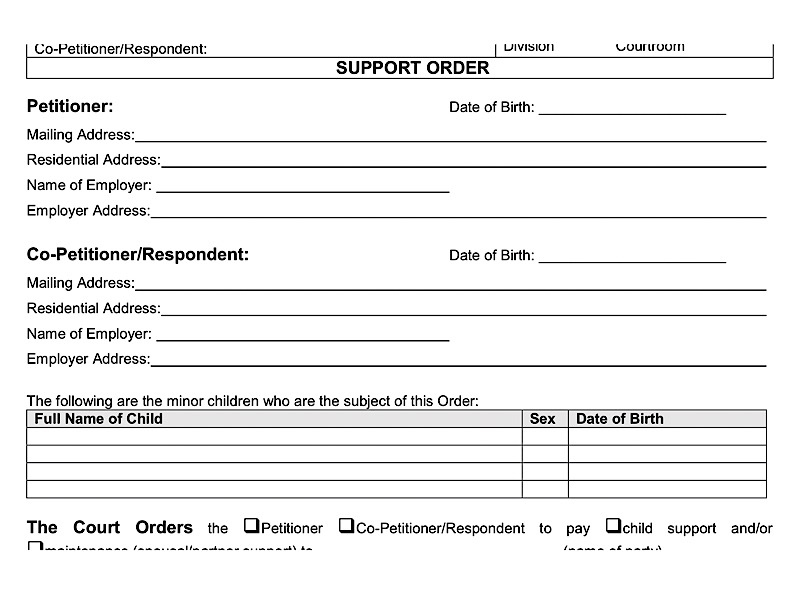
This information is required by Colorado law, specifically, section 26-13-114(7), C.R.S. If a party does not wish to disclose his or her address to the other party due to a history of domestic violence, sexual assault, or stalking, he or she party must apply for the Colorado’s Address Confidentiality Program.
Details of the Order
This section of the Order explains who must pay whom, how often, when, and whether arrears or retroactive support is owed.
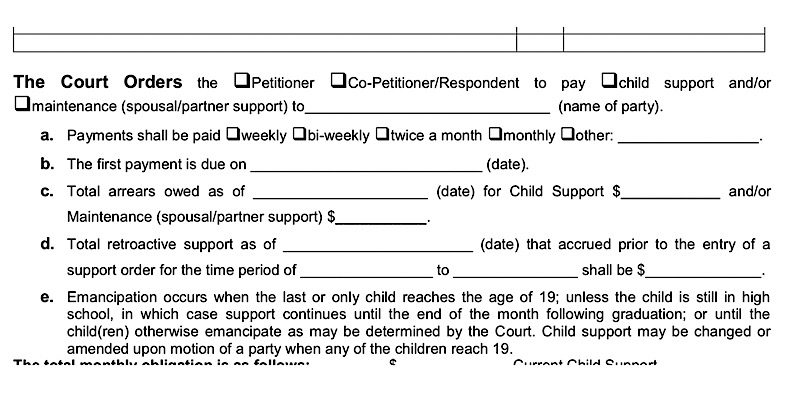
a. & b. The frequency of the payments and the due date of the first payment are important details when determining the due dates of future payments and exactly how much should be paid each time. These details also impact how child support interest is calculated on any arrears.
c. & d. The total arrears is the total amount of unpaid child support from a previous order that is now past due. The total retroactive support is the total amount of support that was determined under this order which began accruing when the action to establish or modify support was initiated.
e. This section explains that the support obligation under this Order will continue until the child emancipates or someone files a motion to modify or terminate it. For more information on how or when to modify your child support order, look through our Knowledge Base.
Summary of Monthly Payments
Next, the Order explains how the child support, maintenance, arrears, and retroactive support listed above is reduced to a single monthly payment.
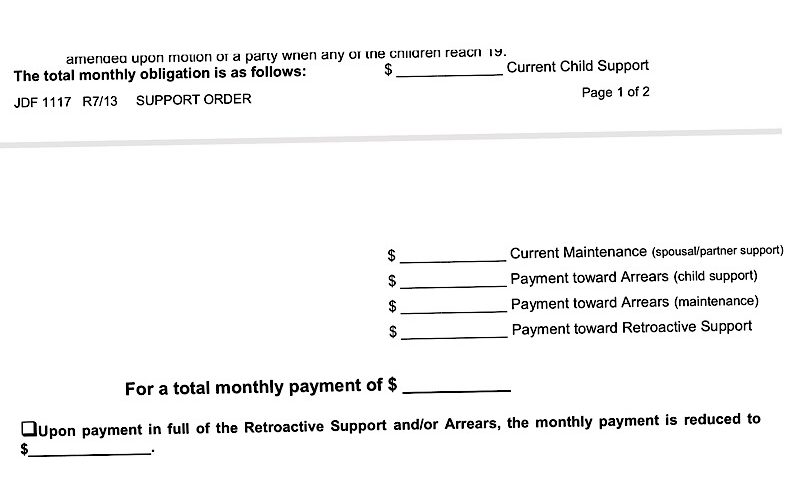
An important detail to understand from this section of the Order, especially if you are trying to calculate arrears or interest on arrears, is the difference between the monthly obligation for “Current Child Support” or “Current Maintenance” and the monthly obligation for “Payment toward Arrears” and “Payment toward Retroactive Support.” To explain further, consider the example total monthly support obligation here:
- $ 400 Current Child Support
- $ 200 Current Maintenance (spousal/partner support)
- $ 50 Payment toward Arrears (child support)
- $ 25 Payment toward Arrears (maintenance)
- $ 42 Payment toward Retroactive Support
- For a total monthly payment of $717
- Upon payment in full of the Retroactive Support and/or Arrears, the monthly payment is reduced to $$600
The current child support or maintenance listed in this section of the Order is the monthly child support or maintenance which must be paid each month — in the example, $400 and $200, respectively. These numbers are the result of a child support worksheet or the monthly amount a court determined needed to be paid toward maintenance. When these particular “current” monthly obligations become past due, they are added to the arrears balance.
How Payments Must Be Made
This section of the Order gives the total amount owed each month and indicates whether payments must be made via income assignment or via direct payment between the parties.
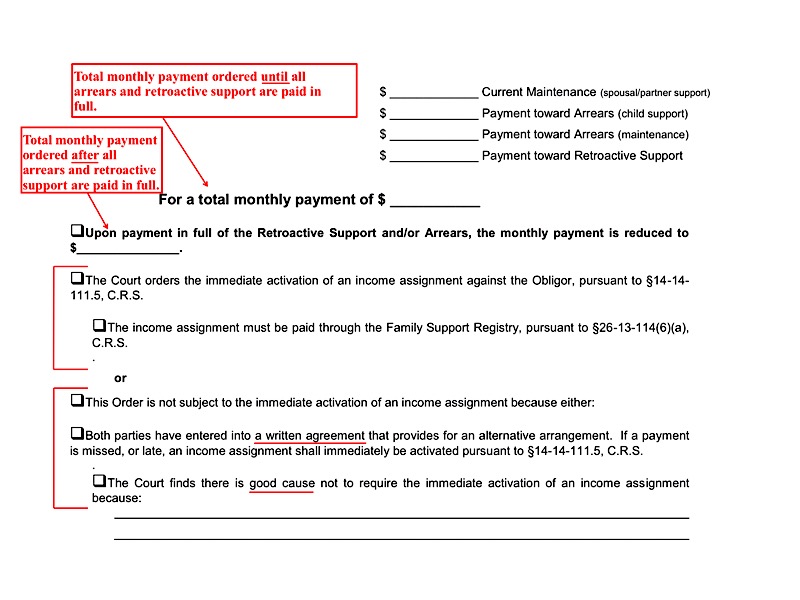
The amount needing to be paid each month is that listed under “For a total monthly payment of $____.” This amount includes current support and the court-ordered monthly payments toward past support. Once all past support is paid, the monthly payment ordered becomes that listed under “Upon payment in full of the Retroactive Support and/or Arrears…”
The section just below that should tell you whether payment is to be taken directly from your paycheck or whether the court has permitted a different payment arrangement. Pursuant to section 14-14-111.5, C.R.S., all Colorado support orders are subject to immediate income assignment, with two exceptions — either the parties have a written agreement to pay child support a different way, such as via bank transfer between the parties, or the court has found that there is good cause not to enter an income assignment. These income assignments are typically paid through the Family Support Registry (“FSR”). Technically, other arrangements can be made for income assignments to be paid directly to the obligor or via the court clerk, but most often, payments are made via FSR.
Responsibility for Insurance Coverage
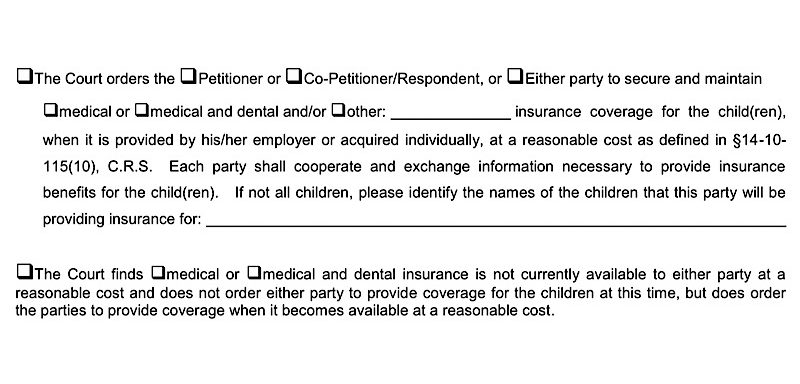
The court can order either party to secure medical insurance, medical and dental insurance, or any other type of insurance (e.g., vision) for the children either through an employer or individually, provided such insurance is available to either party at a reasonable cost. According to section 14-10-115(10), C.R.S., where insurance premiums for the children cost five percent or more of the parent’s gross income, the court may choose not to order the parent to carry the children on a health insurance policy. Instead, the court may order the parent to obtain health insurance for the children when affordable insurance becomes available.
Payments Shall Continue
Every Colorado support order should contain the following declaration: “Payments shall continue until further Order of the Court.” If there is any reason to believe that payments should be altered, waived, or stopped for any reason or for any duration, that will not be the case until and unless the court issues an Order so stating. Verbal agreements to suspend, forgive, or modify child support is not enforceable by the court. Even written agreements to modify, waive, or suspend child support must be approved by the court before such agreement can be enforceable.
For additional information or clarification about your Colorado Support Order, contact an attorney licensed in your jurisdiction.

